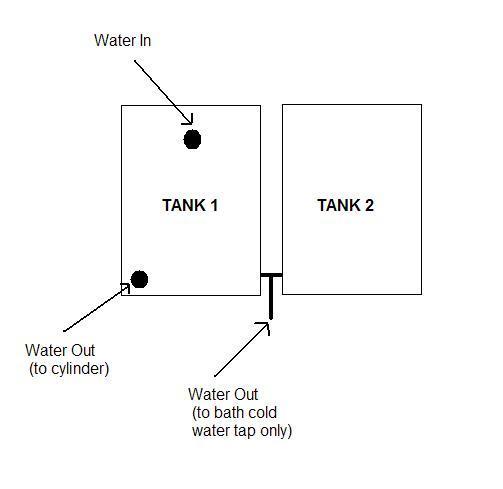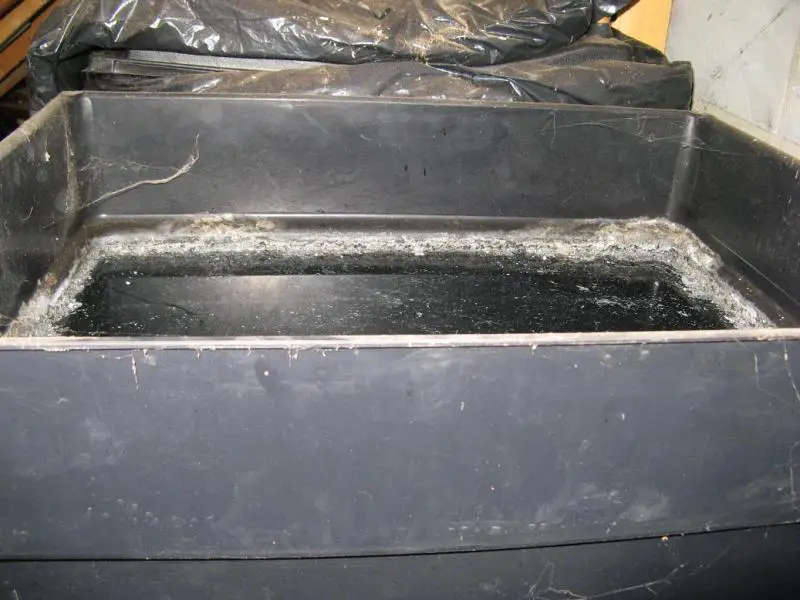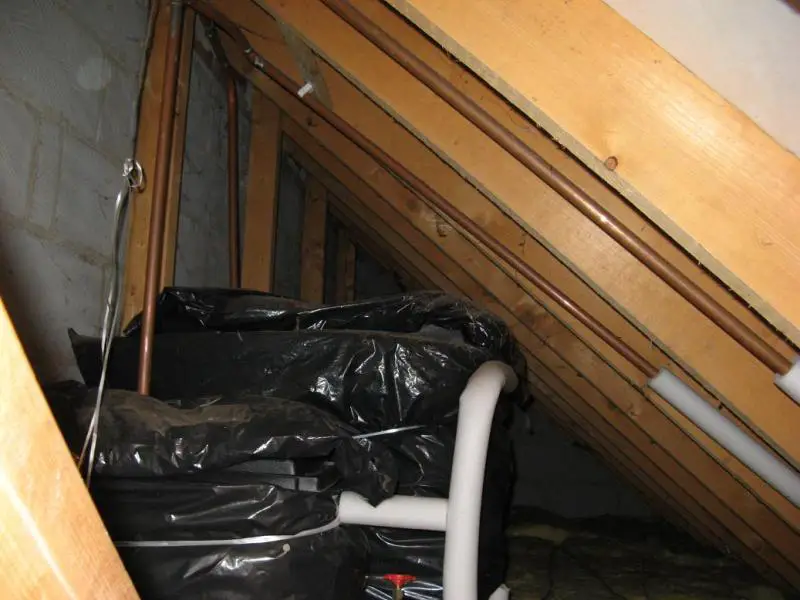Hi all
To avoid confusion, I'll just add first of all that this topic was partially covered in this thread here:
//www.diynot.com/diy/threads/cleaning-fe-header-tank-adding-cleaner-to-heating-sys.421342/
but because that topic split into two very different topics, I thought it best to start afresh on one of them here.
There are two 25 gallon tanks in my loft, linked together. The water goes into and comes out of the same tank. There is a second out pipe which feeds just the cold water tap in the bathroom. The outlet from this comes from the link between the two tanks (forming a "T"). Here's a diagram of the set up:
1. I understand that the inlet should be on one tank and the outlet on the far side of the other so that all of the water flows. For what ever reason they have not done that here. Does that definitely need changing? Or does the second out pipe on the link pipe to the cold water bath tap mean that there will be enough flow/movement in Tank 2 as it is now (to prevent stagnation)?
2. Apart from the strange set up, the idiot who did it chose not to put a lid on the tank. No insulation either. Here's some pictures from a a while ago:
When I went up yesterday I was unpleasantly surprised to find a DEAD BIRD in there!
Apart from draining the tank, cleaning it, getting a lid and a jacket, what else should I consider doing? Do I need to test for bacteria / diseases or anything else? Any treatment needed?
3. There is a vent pipe going into Tank 1. Does that need to be lagged or is it OK as it is?
Huge thanks to anyone who can offer any help with this balls up!
Cheers
Max
To avoid confusion, I'll just add first of all that this topic was partially covered in this thread here:
//www.diynot.com/diy/threads/cleaning-fe-header-tank-adding-cleaner-to-heating-sys.421342/
but because that topic split into two very different topics, I thought it best to start afresh on one of them here.
There are two 25 gallon tanks in my loft, linked together. The water goes into and comes out of the same tank. There is a second out pipe which feeds just the cold water tap in the bathroom. The outlet from this comes from the link between the two tanks (forming a "T"). Here's a diagram of the set up:
1. I understand that the inlet should be on one tank and the outlet on the far side of the other so that all of the water flows. For what ever reason they have not done that here. Does that definitely need changing? Or does the second out pipe on the link pipe to the cold water bath tap mean that there will be enough flow/movement in Tank 2 as it is now (to prevent stagnation)?
2. Apart from the strange set up, the idiot who did it chose not to put a lid on the tank. No insulation either. Here's some pictures from a a while ago:
When I went up yesterday I was unpleasantly surprised to find a DEAD BIRD in there!
Apart from draining the tank, cleaning it, getting a lid and a jacket, what else should I consider doing? Do I need to test for bacteria / diseases or anything else? Any treatment needed?
3. There is a vent pipe going into Tank 1. Does that need to be lagged or is it OK as it is?
Huge thanks to anyone who can offer any help with this balls up!
Cheers
Max





